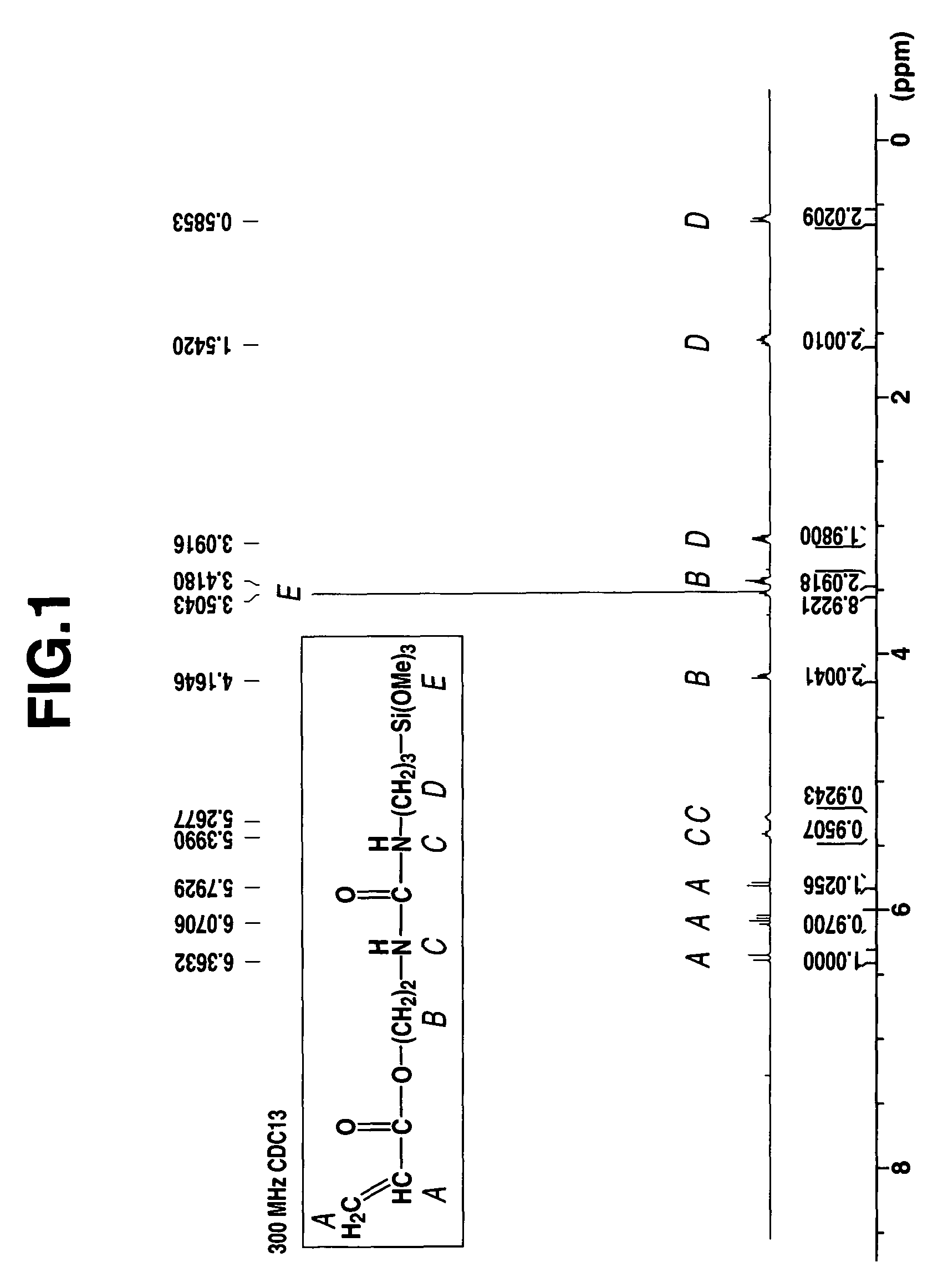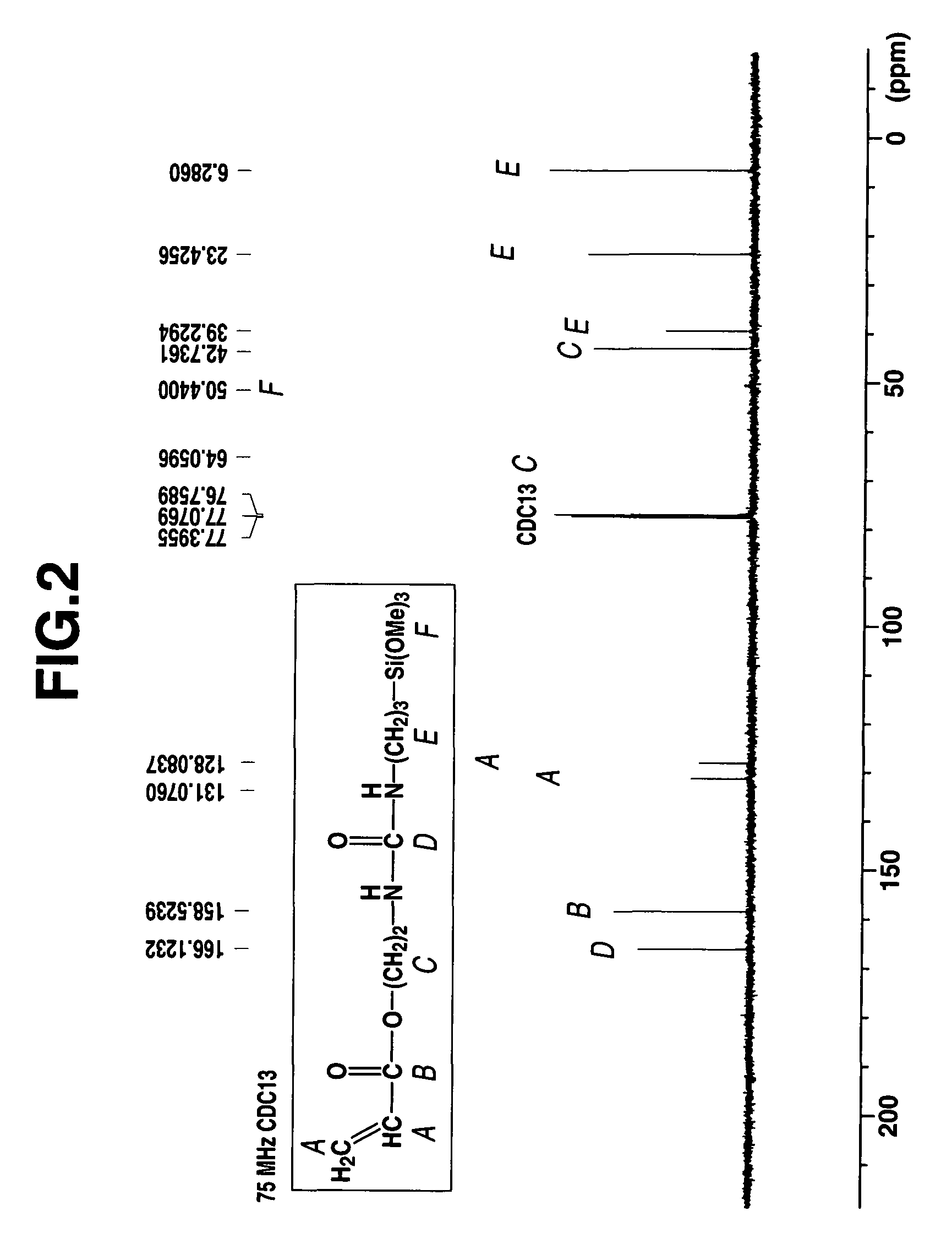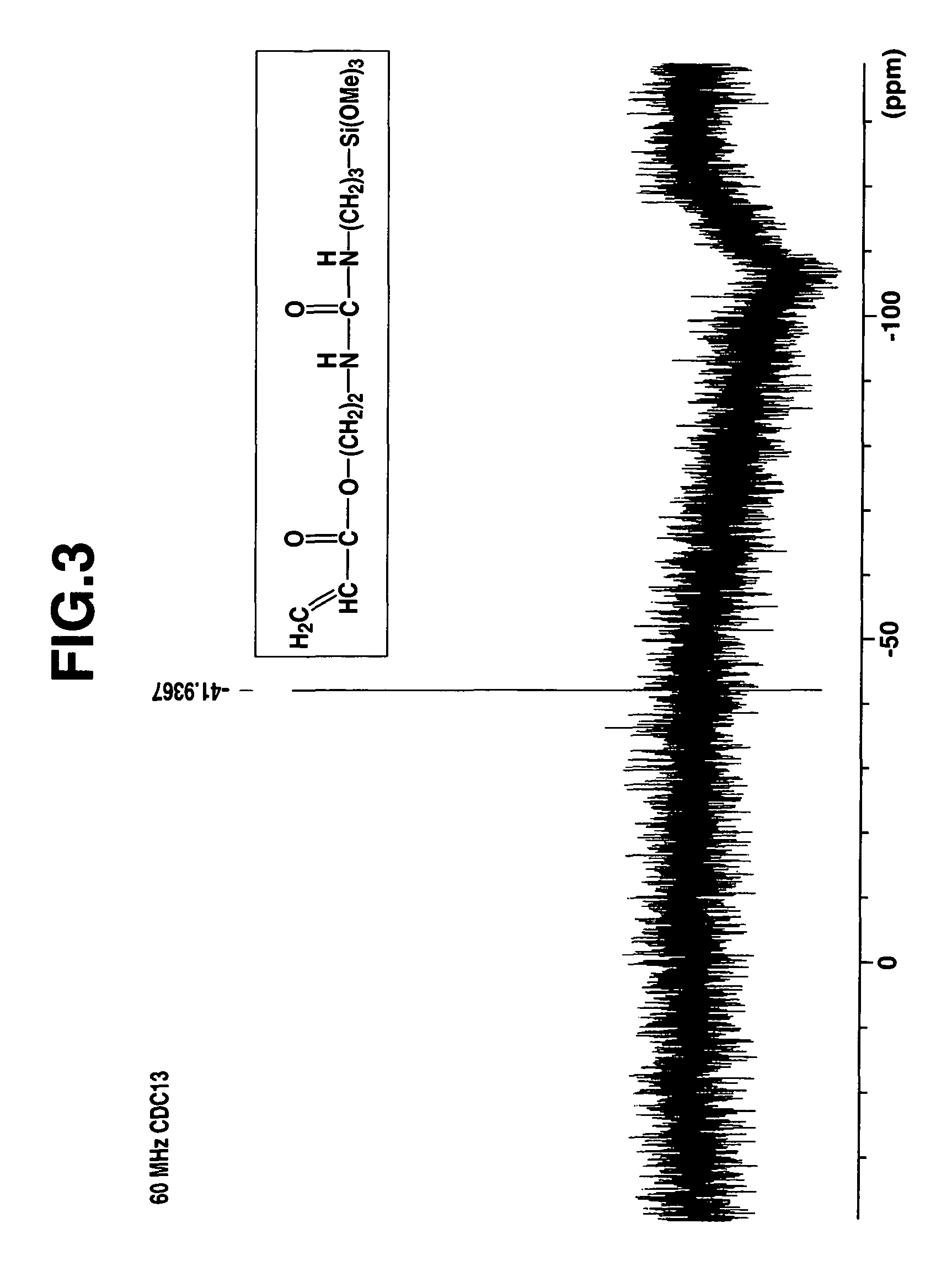Photopolymerizable functional radical-containing organosilicon compound and making method
a functional radical and organic compound technology, applied in silicon organic compounds, organic chemistry, chemistry apparatus and processes, etc., can solve the problems of difficult removal of chlorine from the resulting silane, and achieve the effects of low cost, low cost and high stability
- Summary
- Abstract
- Description
- Claims
- Application Information
AI Technical Summary
Benefits of technology
Problems solved by technology
Method used
Image
Examples
example 1
[0078]A 1-L separable flask equipped with a stirrer, reflux condenser, dropping funnel and thermometer was charged with 179.3 g (1.00 mol) of γ-aminopropyltrimethoxysilane (KBM-903, Shin-Etsu Chemical Co., Ltd.) and cooled to 0° C. in an ice bath. To the flask 141.2 g (1.00 mol) of acryloxyethyl isocyanate (Karenz AOI, Showa Denko K. K.) was added dropwise. The contents were stirred for 4 hours while heating at 30° C. The end of reaction was determined by IR analysis as the complete disappearance of absorption peaks assigned to an isocyanate radical of the reactant and the appearance of absorption peaks assigned to a urea bond instead. The resulting reaction product was a pale yellow liquid having a viscosity of 307 mm2 / s, a specific gravity of 1.143, and a refractive index of 1.4673. On NMR spectroscopy, the reaction product was identified to be a single compound having the following chemical structural formula (7). FIGS. 1, 2, 3 and 4 show 1H-NMR, 13C-NMR, 29Si-NMR, and IR spectra...
example 2
[0080]A 1-L separable flask equipped with a stirrer, reflux condenser, dropping funnel and thermometer was charged with 179.3 g (1.00 mol) of γ-aminopropyltrimethoxysilane (KBM-903, Shin-Etsu Chemical Co., Ltd.) and cooled to 0° C. in an ice bath. To the flask 239.0 g (1.00 mol) of 1,1-bis(acryloxymethyl)-ethyl isocyanate (Karenz BEI, Showa Denko K. K.) was added dropwise. The contents were stirred for 4 hours while heating at 30° C. The end of reaction was determined by IR analysis as the complete disappearance of absorption peaks assigned to an isocyanate radical of the reactant and the appearance of absorption peaks assigned to a urea bond instead. The resulting reaction product was a pale yellow liquid having a viscosity of 3,424 mm2 / s, a specific gravity of 1.151, and a refractive index of 1.4747. On NMR spectroscopy, the reaction product was identified to be a single compound having the following chemical structural formula (9).
[0081]
[0082]NMR spectroscopy data of the compound...
example 3
[0086]A 1-L separable flask equipped with a stirrer, reflux condenser, dropping funnel and thermometer was charged with 222.4 g (1.00 mol) of N-(2-aminoethyl)-γ-aminopropyl-trimethoxysilane (KBM-603, Shin-Etsu Chemical Co., Ltd.) and cooled to 0° C. in an ice bath. To the flask 478.0 g (2.00 mol) of 1,1-bis(acryloxymethyl)ethyl isocyanate (Karenz BEI, Showa Denko K. K.) was added dropwise. The contents were stirred for 4 hours while heating at 30° C. The end of reaction was determined by IR analysis as the complete disappearance of absorption peaks assigned to an isocyanate radical of the reactant and the appearance of absorption peaks assigned to a urea bond instead. The resulting reaction product was a highly viscous colorless clear fluid having a refractive index of 1.4914. On NMR spectroscopy, the reaction product was identified to be a single compound having the following chemical structural formula (12).
[0087]
[0088]NMR spectroscopy data of the compound are shown below.
[0089]1H...
PUM
| Property | Measurement | Unit |
|---|---|---|
| temperature | aaaaa | aaaaa |
| temperature | aaaaa | aaaaa |
| temperature | aaaaa | aaaaa |
Abstract
Description
Claims
Application Information
 Login to View More
Login to View More - R&D
- Intellectual Property
- Life Sciences
- Materials
- Tech Scout
- Unparalleled Data Quality
- Higher Quality Content
- 60% Fewer Hallucinations
Browse by: Latest US Patents, China's latest patents, Technical Efficacy Thesaurus, Application Domain, Technology Topic, Popular Technical Reports.
© 2025 PatSnap. All rights reserved.Legal|Privacy policy|Modern Slavery Act Transparency Statement|Sitemap|About US| Contact US: help@patsnap.com



